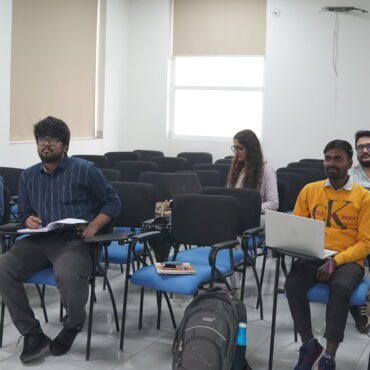In today’s connected world, digital evidence plays a central role in criminal, civil, and corporate investigations. From emails and mobile phone data to CCTV recordings and cloud logs, the digital trail can make or break a case. But digital evidence is fragile — it can be altered, deleted, or corrupted if mishandled. That’s why strict adherence to best practices in collection and preservation is essential for maintaining integrity and admissibility in court.
Why Proper Collection and Preservation Matter
Digital evidence is unlike physical evidence. A single keystroke, boot process, or network connection can change timestamps, logs, or file content. Mishandling may lead to:
-
Loss of critical evidence (e.g., overwritten log files).
-
Challenges in court due to a broken chain of custody.
-
Admissibility issues where the evidence is ruled unreliable.
-
Compromised investigations where findings can no longer be trusted.
By following established forensic standards and protocols, investigators ensure that digital evidence is reliable, authentic, and defensible.
Best Practices for Digital Evidence Collection and Preservation
1. Maintain Chain of Custody
-
Definition: A chain of custody documents every person who handled the evidence, from collection to presentation in court.
-
Practice: Record date, time, collector’s name, location, and reason for handling at each stage.
-
Importance: Courts require clear documentation to trust that the evidence hasn’t been tampered with.
2. Use Write-Blockers
-
Purpose: Prevents accidental changes to the original storage device (hard drive, USB, memory card).
-
Practice: Always use hardware or software write-blockers when imaging drives.
-
Benefit: Ensures data remains intact, while analysis is done on a forensically sound copy.
3. Create Forensic Images, Not Work on Originals
-
Practice: Make a bit-for-bit forensic image of the original media using certified forensic tools.
-
Hash Verification: Generate MD5/SHA256 hash values before and after imaging to prove integrity.
-
Why: This allows safe analysis without risking changes to the original evidence.
4. Prioritise Volatile Data Collection
-
Volatile evidence (RAM, running processes, active network connections) disappears if the device powers off.
-
Practice: If the device is live and relevant, capture volatile memory before shutting down.
-
Tools: Use trusted live forensic tools that minimise system alterations.
5. Document Every Step
-
Keep a detailed activity log: what was collected, how, by whom, and with what tool.
-
Take photos/screenshots of device states (e.g., logged-in screen, open apps).
-
Use standardised forms or digital evidence management systems.
6. Follow Legal & Ethical Guidelines
-
Always obtain proper authorisation (search warrant, consent, or corporate policy).
-
Respect privacy rights — collect only what is relevant to the investigation.
-
Be aware of local data protection laws (e.g., GDPR, IT Act in India).
7. Preserve Metadata
-
Metadata (timestamps, sender/recipient info, GPS location) is often as important as the content itself.
-
Mishandling files (e.g., copying without forensic tools) may alter metadata.
-
Use forensic methods that preserve original metadata during acquisition.
8. Secure Storage of Evidence
-
Store original devices and forensic images in tamper-evident, sealed containers.
-
Use access-controlled digital vaults for forensic images.
-
Regularly audit evidence storage for integrity and compliance.
9. Ensure Tool Validation and Examiner Competence
-
Only use forensic tools validated by the community and accepted in court.
-
Examiners must be trained, certified, and familiar with digital forensic standards (e.g., ISO/IEC 27037).
-
Expert witness credibility often depends on the examiner’s qualifications.
10. Regularly Update Policies and Procedures
-
Digital forensics evolves rapidly; what was sufficient two years ago may be obsolete today.
-
Organisations should update internal SOPs and train staff regularly on emerging tools, threats, and legal standards.
Challenges in Evidence Collection
-
Encryption & Passwords: Devices may be locked; forensic labs must use lawful techniques or obtain legal orders.
-
Cloud Evidence: Requires cooperation with providers and timely preservation requests.
-
Data Volume: Massive datasets require prioritisation and selective acquisition strategies.
-
Cross-Border Issues: Evidence stored in another jurisdiction may involve international legal processes.
The Role of Forensic Labs like Hawk Eye Forensic
At Hawk Eye Forensic, we specialise in lawful digital evidence collection and preservation across:
-
Mobile devices (Android/iOS).
-
Computers, laptops, and servers.
-
Cloud services and email platforms.
-
Audio, video, and image verification.
-
Deleted data and metadata recovery.
We follow international standards, maintain a strict chain of custody, and provide court-ready forensic reports. Our lab uses certified forensic tools and ensures privacy, security, and admissibility of every piece of evidence.
Conclusion
Digital evidence is fragile — once mishandled, it may lose its value in court. By following best practices in collection and preservation, investigators, corporations, and law enforcement can ensure that evidence remains intact, defensible, and useful.
For organisations, partnering with a certified forensic lab ensures compliance, accuracy, and peace of mind.





Post comments (0)